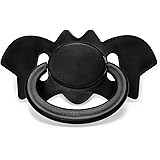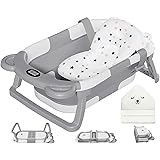The sudden realization that a baby is choking can be one of the most terrifying moments a parent or caregiver may ever experience. While the video above provides a crucial, rapid overview of how to respond, understanding the full context and mastering these life-saving techniques requires additional depth and regular practice. Immediate, correct action is paramount in such a critical situation.
Infants possess delicate airways, rendering them especially vulnerable to obstructions. Their developing motor skills mean they frequently explore objects by mouth, inadvertently increasing the risk of a choking incident. Consequently, every caregiver must equip themselves with the knowledge and confidence to effectively assist a choking baby, transforming potential tragedy into a manageable emergency.
Understanding Infant Choking: What Every Caregiver Needs to Know
Infants naturally possess smaller, more flexible airways compared to adults, making them highly susceptible to airway obstruction from surprisingly small objects. Their coordinated chewing and swallowing reflexes are still developing, which further exacerbates this inherent risk. Furthermore, babies often explore their environment by placing objects in their mouths, a crucial developmental stage that unfortunately also presents significant hazards.
It is important to differentiate between gagging and actual choking. Gagging is a noisy, protective reflex where the baby might cough forcefully or make choking sounds, usually able to clear the obstruction themselves. Conversely, true choking occurs when the airway is significantly or completely blocked, often resulting in silent struggles, an inability to cough or cry, and possibly a bluish discoloration of the skin. Recognizing these critical distinctions promptly can guide your immediate response effectively.
Crucial Steps Before Intervention: Recognizing the Signs
Before initiating physical intervention for a choking baby, a rapid assessment of the situation is absolutely vital. Observe the baby’s demeanor; are they making any noise, coughing, or struggling to breathe? A baby who can cry loudly or cough forcefully may be able to clear the obstruction independently.
However, if the baby exhibits silent struggling, becomes pale or bluish, or cannot make any noise, it indicates a severe airway obstruction. In such an urgent scenario, it is imperative to immediately call for emergency medical services (911 in the U.S. or your local emergency number). Simultaneously, commence the critical first aid steps while awaiting professional help.
Mastering the Technique: How to Help a Choking Baby
The video above effectively demonstrates the two primary techniques for assisting a choking infant: back blows and chest thrusts. These actions are designed to dislodge the foreign object by creating a sudden increase in pressure within the baby’s airway. Performing these steps correctly and with appropriate force is essential for their effectiveness.
Executing Five Back Blows with Precision
To administer back blows, carefully position the baby face down along your forearm, ensuring their head is lower than their chest. Support the baby’s head and neck firmly with your hand, using your lap or thigh for additional stability. Deliver five distinct, firm back blows with the heel of your free hand directly between the baby’s shoulder blades. Each blow should be strong enough to dislodge the object but not so forceful as to cause injury to the delicate infant.
After each blow, quickly check the baby’s mouth to see if the object has been expelled. If the object becomes visible, carefully remove it with your finger only if you can see it clearly; blindly sweeping could push the object further down the throat. If the obstruction persists, proceed immediately to chest thrusts.
Administering Five Chest Thrusts Effectively
Following the back blows, if the object remains lodged, gently flip the baby over onto their back, again ensuring their head remains lower than their chest. Position two fingers, typically the index and middle fingers, on the baby’s breastbone just below the nipple line. Deliver five quick, downward thrusts, similar to chest compressions during CPR but slightly softer.
The goal of these thrusts is to create a powerful cough-like effect that expels the foreign body. Continuously alternate between five back blows and five chest thrusts until the object is dislodged, the baby begins to cry or cough forcefully, or emergency medical personnel arrive. Should the baby become unresponsive at any point, immediately begin infant CPR and continue to call for help.
When to Call for Help and What Happens Next
As previously mentioned, calling 911 or your local emergency number is a critical first step as soon as you recognize a severe choking incident. Even if you successfully dislodge the object, medical professionals should still evaluate the baby. There could be residual pieces of the object remaining, or the baby might have sustained a minor injury during the event.
Furthermore, prompt medical attention ensures the baby’s airway is completely clear and addresses any potential breathing difficulties that may arise post-choking. Consequently, never hesitate to seek professional help, as it provides an additional layer of safety and expert assessment for the infant. This vigilant approach ensures the best possible outcome for the choking baby.
Proactive Prevention: Minimizing Choking Hazards for Infants
While knowing how to react is crucial, prevention remains the most effective strategy against infant choking. Understanding common choking hazards and implementing strict safety measures can significantly reduce the risk. Infants are particularly vulnerable to small items and certain foods due to their developmental stage.
Common choking hazards include small toys, coins, buttons, and tiny batteries. Furthermore, certain food items pose a substantial risk, such as whole grapes, hot dogs, nuts, popcorn, and chunks of meat or cheese. Always cut food into small, manageable pieces appropriate for an infant’s age and chewing ability. Constant, vigilant supervision during feeding times and playtime is absolutely non-negotiable.
The Power of Preparation: Practice Makes Perfect
Responding calmly and effectively during an emergency like a choking incident depends heavily on preparedness. Simply watching a video or reading instructions is a valuable starting point, but hands-on training builds essential muscle memory and confidence. Enrolling in a certified infant CPR and first aid course is a truly invaluable investment for any caregiver.
Regularly reviewing these techniques, perhaps with a certified instructor or even a realistic baby mannequin, can help reinforce your knowledge. Practicing the positioning, the force of the blows and thrusts, and the critical sequence of actions ensures you are ready. This level of preparation empowers you to act decisively and competently should you ever face the terrifying reality of a choking infant.











